Quando cerchiamo di accedere ai nostri siti web WordPress, a volte la pagina di login si aggiorna e si reindirizza continuamente, impedendoci di accedere all’area di amministrazione di WordPress.
Se state sperimentando questo problema, non siete i soli. Il problema dell’aggiornamento e del reindirizzamento della pagina di login di WordPress è comune e frustra molti proprietari di siti WordPress. Detto questo, abbiamo testato diversi metodi collaudati per risolvere il problema.
In questa guida completa, vi mostreremo come risolvere il problema del refresh e del reindirizzamento della pagina di login di WordPress. Immergiamoci e torniamo alla dashboard di WordPress per riprendere il controllo del vostro sito web!
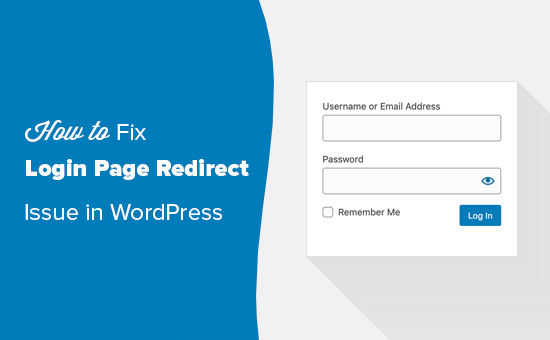
Cosa causa il problema di aggiornamento e reindirizzamento della pagina di login in WordPress?
L’errore di aggiornamento e reindirizzamento della pagina di login di WordPress (chiamato anche loop di reindirizzamento del login di WordPress) è solitamente causato da impostazioni errate dell’URL di WordPress o dalla mancata impostazione dei cookie di login.
Normalmente, quando si accede, WordPress convalida il nome utente e la password e poi imposta un cookie di accesso nel browser. Successivamente, l’utente viene reindirizzato alla dashboard di WordPress.
Se WordPress non riesce a impostare correttamente il cookie di accesso o l’URL dell’area di amministrazione di WordPress non è corretto, si verrà reindirizzati alla schermata di accesso anziché alla dashboard di amministrazione.
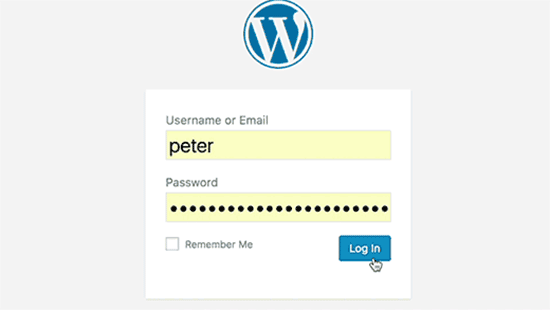
I problemi di accesso possono essere causati anche da diversi errori di WordPress, come l’errore di connessione al database, l’errore interno del server o la schermata bianca della morte.
Con queste premesse, cerchiamo di risolvere il problema del reindirizzamento e dell’aggiornamento della pagina di login di WordPress. Potete utilizzare questi collegamenti rapidi per passare a un metodo specifico:
- Method 1: Clear Cookies to Resolve Login Issues
- Method 2: Update WordPress URL Settings
- Method 3: Delete .htaccess File in WordPress
- Method 4: Deactivate Your Plugins
- Method 5: Revert Back to the Default Theme
- Method 6: Reinstall WordPress Core
- Video Tutorial
- What to Do If You Can't Fix WordPress Login Redirect Issue
Nota: se volete provare i passaggi avanzati di questo tutorial su WordPress, create prima un backup del vostro sito. Consultate la nostra guida su come creare manualmente un backup del database di WordPress.
Metodo 1: Cancellare i cookie per risolvere i problemi di accesso
WordPress utilizza i cookie per l’autenticazione del login, quindi il primo passo per risolvere i problemi di login di WordPress è il più semplice. È necessario cancellare i cookie e la cache del browser.
In Google Chrome, è sufficiente fare clic sul menu delle impostazioni del browser e poi selezionare Altri strumenti ” Cancella dati di navigazione.
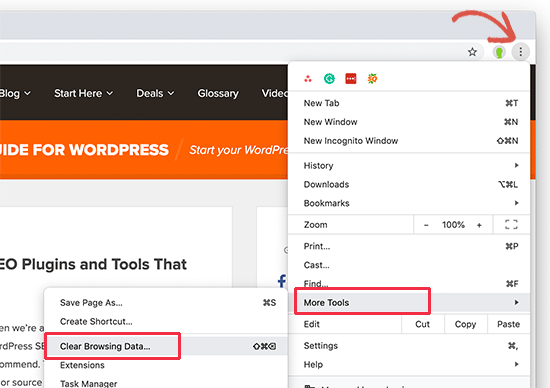
Si aprirà la pagina delle impostazioni di Chrome con un popup “Cancella dati di navigazione” visualizzato sullo schermo.
Da qui è necessario selezionare le opzioni “Cancella cookie e altri dati del sito” e “Immagini e file nella cache”.
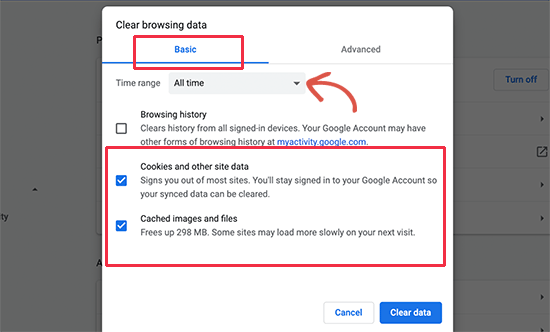
Quindi, fate clic sul pulsante “Cancella dati” e Google Chrome cancellerà la cache del browser.
Assicuratevi inoltre che il vostro browser abbia i cookie abilitati. Dopo aver fatto ciò, riavviare il browser e provare ad accedere. Questo dovrebbe risolvere il problema per la maggior parte delle persone.
Abbiamo una guida completa con schermate che mostrano come cancellare la cache e i cookie in tutti i principali browser.
Metodo 2: Aggiornare le impostazioni degli URL di WordPress
WordPress è dotato di impostazioni per l’URL del vostro sito web e per l’URL della vostra installazione di WordPress.
Se si ha accesso all’area di amministrazione di WordPress, si può vedere questa opzione nella pagina Impostazioni ” Generale”.
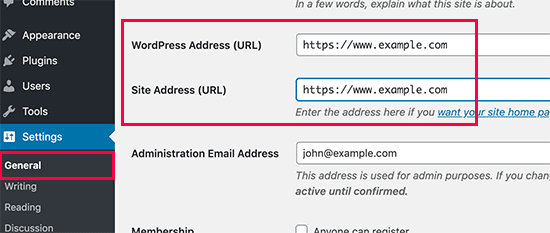
Se questi URL non sono corretti, WordPress vi reindirizzerà alla pagina di accesso.
Poiché non è possibile accedere all’area di amministrazione di WordPress, è necessario modificare il file wp-config.php per risolvere il problema.
Il file wp-config.php è un file speciale di WordPress che contiene le impostazioni importanti di WordPress. Potete accedervi utilizzando un client FTP o tramite l’applicazione File Manager nella dashboard del vostro account di hosting WordPress.
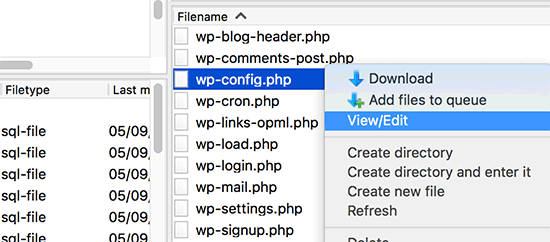
Il file wp-config.php si trova nella cartella principale del sito. Basta modificare il file e incollare le seguenti righe di codice appena prima di quella che dice: "È tutto, smettete di modificare! Buona pubblicazione".
1 2 | define('WP_HOME','https://www.example.com');define('WP_SITEURL','https://www.example.com'); |
Non dimenticate di sostituire “example.com” con il vostro nome di dominio.
Quindi, salvare le modifiche e caricare il file sul proprio sito web.
Ora potete visitare il vostro sito web WordPress e provare ad accedere. Si spera che questo abbia risolto il problema. Se così non fosse, continuate a leggere per ulteriori passaggi di risoluzione dei problemi.
Metodo 3: Eliminare il file .htaccess in WordPress
A volte, il file .htaccess può essere danneggiato, causando errori interni al server o l’errore di aggiornamento della pagina di login.
È sufficiente accedere al vostro sito web utilizzando un client FTP o tramite l’applicazione File Manager nella dashboard del vostro provider di hosting.
Una volta collegati, individuare il file .htaccess nella directory principale del sito web e scaricarlo sul computer come backup.
Se non riuscite a trovare il vostro file .htaccess, questa guida sul perché il vostro file .htaccess potrebbe essere mancante può aiutarvi.
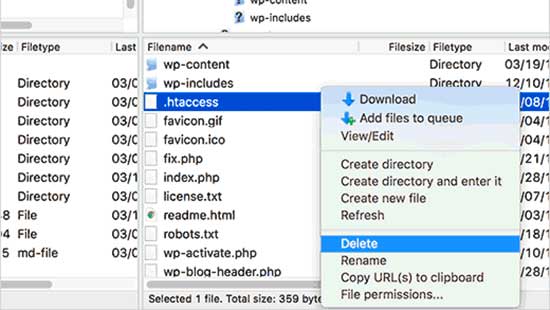
Dopodiché, cancellate il file .htaccess dal vostro sito web.
Quindi, aprire la cartella wp-admin e, se c’è un file .htaccess, cancellare anche quello.
Ora potete provare ad accedere al vostro sito web WordPress. Se ci riuscite, significa che il file .htaccess vi impediva di accedere a WordPress.
Una volta effettuato l’accesso, basta andare alla pagina Impostazioni ” Permalinks nel pannello di amministrazione di WordPress e fare clic sul pulsante “Salva” senza apportare alcuna modifica. In questo modo verrà generato un nuovo file .htaccess per il vostro sito web.
Metodo 4: Disattivare i plugin
A volte, i plugin di WordPress possono causare questo problema, soprattutto se c’è un conflitto tra due plugin.
Per disattivare facilmente tutti i plugin di WordPress, collegatevi al vostro sito web utilizzando un client FTP o tramite l’applicazione File Manager nella dashboard del vostro account di web hosting.
Una volta collegati, andate nella cartella /wp-content/. Al suo interno, vedrete una cartella denominata “plugins”. È qui che WordPress installa tutti i vostri plugin.
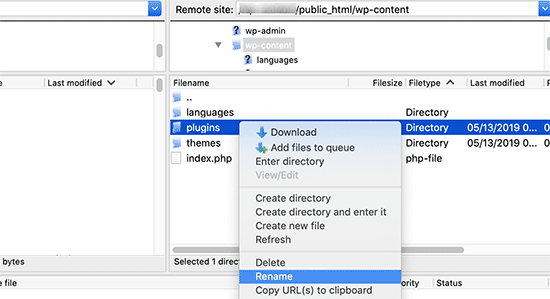
È sufficiente rinominare la cartella dei plugin in “plugins_backup”. In questo modo verranno disattivati tutti i plugin di WordPress installati sul vostro sito web.
Abbiamo anche un tutorial dettagliato su come disattivare tutti i plugin di WordPress quando l’amministrazione di WordPress è inaccessibile.
Una volta disattivati tutti i plugin, provate ad accedere al vostro sito WordPress. Se ci riuscite, significa che il problema era causato da uno dei vostri plugin.
Metodo 5: Tornare al tema predefinito
I temi di WordPress possono causare conflitti anche dopo l’aggiornamento a una versione più recente di WordPress o del tema stesso. Per scoprire se il problema è causato dal tema, è necessario disattivarlo.
Il processo è simile alla disattivazione dei plugin. Collegatevi al vostro sito web utilizzando un client FTP. Quindi, si deve andare nella directory /wp-content/themes/ e rinominare la directory del tema corrente in “themes_backup”.
Una volta fatto questo, provare ad accedere di nuovo. Se ci si riesce, significa che il problema era causato dal tema.
Ora è possibile reinstallare una nuova copia del tema per verificare se il problema si risolve. Se il problema si ripresenta, è necessario contattare l’assistenza del tema o passare a un tema WordPress diverso.
Metodo 6: Reinstallare il nucleo di WordPress
In rari casi, il problema della ricarica persistente della pagina di accesso potrebbe essere causato da file corrotti del nucleo di WordPress.
Questi file fondamentali sono la base del sito web WordPress e gestiscono le funzionalità essenziali. Se questi file si danneggiano o vengono sovrascritti con codice non corretto, possono verificarsi vari errori, tra cui problemi di accesso.
Innanzitutto, visitate WordPress.org e scaricate l’ultima versione del software. Una volta scaricato, decomprimere il file sul computer. Verrà creata una cartella denominata “wordpress” contenente tutti i file necessari per la reinstallazione.
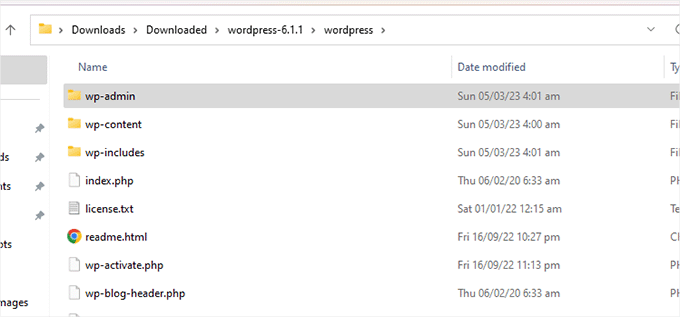
Successivamente, è necessario collegarsi al sito web utilizzando un client FTP o il file manager fornito dal fornitore di hosting.
Una volta collegati, navigare nella cartella principale del sito web. Si tratta della directory principale che contiene cartelle come wp-admin, wp-content e wp-includes.
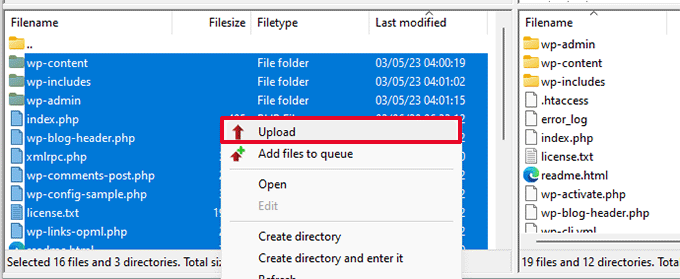
A questo punto, prendete tutti i file dalla cartella “wordpress” sul vostro computer e caricateli nella directory principale del vostro sito web.
Il client FTP chiederà di confermare la sovrascrittura di eventuali file di base esistenti.
Poiché state eliminando i file core di WordPress danneggiati e li state sostituendo con altri nuovi, scegliete “Sovrascrivi” e selezionate l’opzione “Usa sempre questa azione” per evitare di dover confermare ogni singolo file.
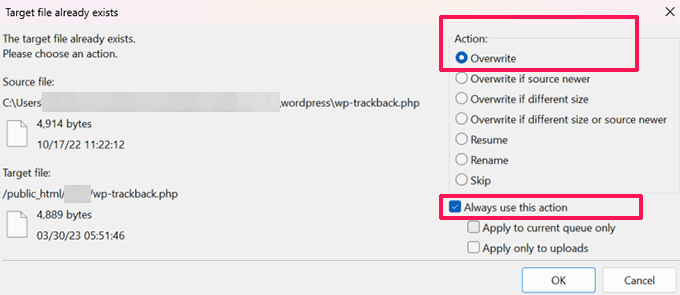
Infine, fate clic su “OK” per avviare il processo di uploader. Il vostro client FTP sostituirà i file principali di WordPress sul vostro sito web con quelli freschi del vostro computer.
Una volta completato l’uploader, visitate il sito web per vedere se l’errore è corretto. Se il problema di accesso è causato da un file core corrotto o da un malware, il messaggio di errore dovrebbe essere sparito e si dovrebbe poter accedere con successo.
Video tutorial
Se avete bisogno di istruzioni visive, guardate il video qui sotto.
Cosa fare se non si riesce a correggere il problema del reindirizzamento dell’accesso a WordPress
Se avete provato di tutto, dal cancellare i cookie del browser alla disattivazione di temi e plugin, ma il problema persiste, potete provare a chiedere supporto alla comunità di WordPress.
Gli utenti di gruppi come il gruppo Facebook di WPBeginner Engage potrebbero aver riscontrato il vostro stesso problema e potrebbero fornirvi indicazioni su cosa fare per risolvere i problemi della pagina di accesso.
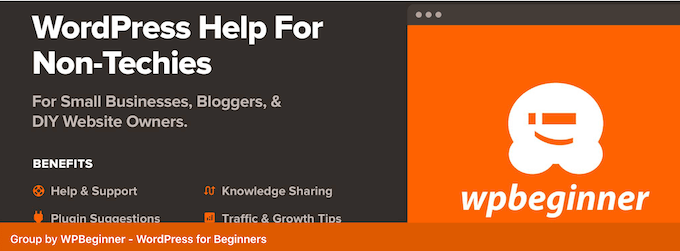
A parte questo, potete rivolgervi a soluzioni di assistenza WordPress come WPBeginner Pro Services. Offriamo un servizio di assistenza WordPress d’emergenza, in cui gli esperti possono individuare cosa sta succedendo al vostro sito web e risolvere il problema alla radice.
Potete anche assumere i nostri servizi di manutenzione di WordPress per evitare che problemi come malware, tempi di inattività elevati e WordPress obsoleto colpiscano il vostro sito web in primo luogo.
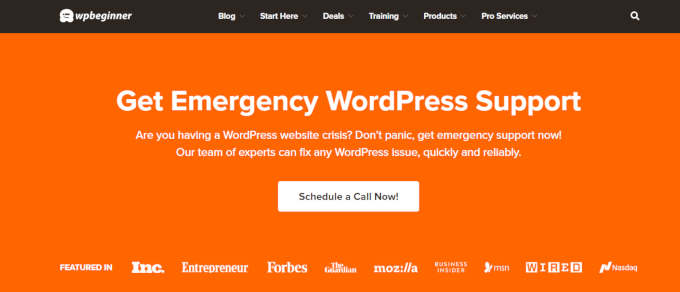
Non esitate a prenotare un appuntamento con il nostro team oggi stesso per vedere cosa possiamo fare per sistemare il vostro sito web.
Learn More WordPress Soluzioni per la risoluzione dei problemi
Avete riscontrato altri errori comuni di WordPress e avete bisogno di trovare un modo per correggerli? Ecco altri articoli che potete consultare:
- Come correggere l’errore Troppi reindirizzamenti in WordPress
- Come correggere facilmente l’errore “This Site Can’t Be Reached” in WordPress
- Come correggere il messaggio “Il sito sta riscontrando difficoltà tecniche” in WordPress
- Come correggere gli articoli di WordPress che ritornano con l’errore 404 (passo dopo passo)
- Come correggere l’errore di contenuto misto in WordPress (passo dopo passo)
- Come correggere l’errore JSON non valido in WordPress (guida per principianti)
- Come trovare e accedere ai registri degli errori di WordPress (passo dopo passo)
- Come correggere il problema del mancato invio di email da parte di WordPress
- Come correggere WordPress bloccato in modalità manutenzione (in modo semplice)
Speriamo che questo articolo vi abbia aiutato a risolvere il problema del refresh e del reindirizzamento della pagina di login di WordPress. Potreste anche voler consultare la nostra guida completa alla risoluzione dei problemi di WordPress o dare un’occhiata alla nostra classifica dei migliori plugin e strumenti di WordPress per far crescere il vostro sito.
Se questo articolo vi è piaciuto, iscrivetevi al nostro canale YouTube per le esercitazioni video su WordPress. Potete trovarci anche su Twitter e Facebook.





Eric
I had to rename /wp-content/object-cache.php. Hope that helps for anyone who the other steps don’t work for.
Alisha
When i type myurl.com/wp-admin the page shows blank. I can’t see any login panel either nor does my website opens… what is the cause?
WPBeginner Support
Please see How to fix the WordPress white screen of death.
Admin
Akeem
editing the wp-config worked like a charm. thank you so much!
Jeff
If you are having this issue, and nothing suggested here will work – log into the Cpanel and go into PHP My Admin, run a repair on your database table.
Micah
Adding the code to the wp-config.php solved this for me.
define(‘WP_HOME’,’http://example.com’);
define(‘WP_SITEURL’,’http://example.com’);
Thanks for the article! It took me 3 hours sifting through other posts before I found your post and the resolution that I needed!
Micah
MuhdNurHidayat
Thank you very much! You saved my day!!
Gordon
This problem can also occur if your server hosting WordPress has run out of disk space. Freeing up disk space can solve it.
Victor
You saved my day. I lost hours trying to find what the hell was wrong… thanks dude
Angelo
Deleting the .htaccess worked for me. Thank you
Friday0
Sir please help me look at what am getting it started this night.
Fatal error: Call to undefined function
wp_is_mobile() in /home/u318928021/
public_html/wp-login.php on line 39
I don’t know what to do
WPBeginner Support
Seems like a plugin or your WordPress theme is causing this error. Deactivate all your WordPress plugins and check if this resolves your issue. If it does then you need to reactivate plugins one by one. This will help you find the plugin causing the error. If deactivating all plugins does not resolve the issue, then switch to a default WordPress theme like Twenty Fifteen. If switching theme resolves the issue, then the problem is your with your WordPress theme.
Admin
Luis
Thanks, it was a plugin conflict. I just deleted some useless crap via ftp and now it’s all sorted.
Thomas Le Coz
You guys saved my ass. I was stuck outside a client site after messing with a SSL certificate and some stuff on managed account.
Never encountered this issue before, got saved by your guide.
Thanks
Eva Duli
Nothing of these work for me. I want to work the site localhost but when I am trying to login in the admin it redirects to the old admin login. Do you have any idea?
Marco Panichi
My problem was that I hadn’t renew the database and the provider denied my user to insert/update the database.
The error I received was: “INSERT command denied to user ‘Sqlxxxxxx’@’xx.xxx.xxx.xxx’ for…”
So the solution in my case was:
1) activate the debug into wp-config.php > define(‘WP_DEBUG’, true); in order to discover the problem
2) renew the database
Hope this help!
JohnnZenith
I have a wordpress.com blog and all these instructions either are not relevant or I do not understand them, so I guess i’m going to leave it.
WPBeginner Support
These instructions are for self hosted WordPress.org sites. Please see our guide on the difference between WordPress.com and WordPress.org
Admin
chris
I cant find my .htaccess file? I can find it in my rootfirectory but not on my subdomain (where I have a whole new wordpress site). What do I do? It is my first time ever to log in to my subdomain wordpress.
Kenny
The dreaded Internal Server Error and web host support quickly identified a corrupted .htaccess. Spent next 3 hours trying to find how to use my ImportBuddy when I didn’t have WP Admin access. Finally thought to check WPBeginner, found the .htaccess issue above and 30 seconds later had fixed the issue. Next time I come here first!
Thanks guys and gals.
Drew
Changing the wp-config.php file did it for me! This is the second time I’ve had this issue in two weeks, so I think the fix via htaccess was only a temporary solution.
joel
Seriously a life saver! Corrupted .htaccess files was my issue. But following your steps helped me solve it. Much, much appreciated!
Sumdi
Its working
Have rename .htaccess and update WP_HOME, WP_SITEURL to proper URL in wp-config.php file….
rubenjm
I had this issue, tried all these options and none worked for me.
Finnally solved it… apparently my database was overloaded!! I had to login through phpmyadmin and delete and clean some tables. Hope it helps someone!
Moises
Which tables clean you?
Liviu
I did all of the proposed solutions, but nothing works for me! It keeps refreshing and redirecting it back to the login screen. Changing the folder of my current theme gives the white screen of death. It doesn’t revert to the default theme. Any other idea, please?
Being at a dead end, I’m thinking to download all the site through ftp, make a new one site from WordPress and then upload one by one all my content. I’m worry however if I’ll be able to insert all the customization settings afterwards. The current theme was made custom by another person which cannot help anymore. Is it safe to do that? Thanks!
Mary Anne
Thank you so much. I have WordPress pages built via my account with bluehost. One of my wordpress sites stopped working. I had the white screen of death.
I followed each step in order, until I found the step that worked to resolve my problem. The step that worked for me was, Revert Back To Default Theme. Instead of using an ftp though, because I was having a hard time with my fetch working, I logged into my bluehost account and went into my file manager and then accessed my wpcontent/themes/directory that way for changing the title of my current theme.
this worked perfectly. I was able to log back in and choose a different theme. Thank you again
Mary
Manish
Hello,
Its not working for me. I had made every change into my site as per this tutorial still no luck. Added these two line in web config file.
define(‘WP_HOME’,’http://www.siteurl.com’);
define(‘WP_SITEURL’,’http://www.siteurl.com’);
deleted .htaccess file. but still same problem. My site running on 1&1 hosting.
Please help me.
Thanks
Manish
Umair
Dear manish , there is small change use it will definitely work
1define(‘WP_HOME’,’http://example.com/wp-admin’);
2define(‘WP_SITEURL’,’http://example.com’);
Abdul Ghani
Updating the site URL worked for me!
the wicked noodle
Clearing my cache and cookies fixed it right away. Thanks so much!
Claudia
Update Site URL worked perfect for me! Thank you!
WPBeginner Staff
Contact your web hosting service provider. If they are unable to help then switch to a better WordPress hosting solution.
Louis
Noting work for me… wp 3.9.1, Hostpapa hosting.
WPBeginner Staff
Try checking your server error logs. You can also try increasing php memory limit. Let us know if this helps.
Beck Abad Lastimosa
I have had my site for more than 6 months now and I finally decided to transfer hosting. After the transfer was successfully done, I as still able to access my login page. But these past few days has been a nightmare! I am was able to login to WP under the new DNS but as of this time, this problem suddenly occured:
– Everytime I login to WP admin, I should see the login page right? But what I get is a download of wp-login.php. I have tried checking issues ith the guide of WP Codex. I tried contacting GoDaddy (my new host) but they told me they do not handle coding, etc. Right now, I’m on a dead end! I have tried different browsers but I still get a download of wp-login.php instead of the login page showing itself.
I ould really appreciate it if you can help me.
Thilip kumar
I Check with all the above but unable to login, I can ablre to see the login window, after I submitting login form. I Displays ‘.’ (Dot symbol)
Alison Withers
You’re a godsend!!! Editing the config file to define the site address again did the trick.
Jaka
YES! This did it for me too. Magic! Thanks!
Isak
Did all of the above, nothing works. My main wp-login.php redirects me to one of my subdomains.
This is how the redirect problem occured:
1. My web hotel shut down my site, saying that it had been infected with malware.
2. I changed all my passwords via PhpMyAdmin as well as to the database.
3. I manually updated WP in my root directory as well as 2 out of 3 subdomains (the 3rd one already had the latest version) by uploading the new files and replacing the old ones, since I was not allowed to access my WP admin area.
4. I manually added a .htpasswd and .htaccess to my root WP install and tried to access wp-login.php. I tried my 3rd subdomain (the one with the latest install of WP) first and it worked. After that, I tried my main domain and came to a page saying “update database”, so I did. After that I tried again, but every time I try to reach my root install or any of the other subdomains, I get redirected to my 3rd subdomain.
Any ideas?
WPBeginner Support
Open the wp-config.php file on the root site. Add these two lines to your wp-config.php file:
define('WP_HOME','http://example.com');define('WP_SITEURL','http://example.com');1-click Use in WordPress
Replace example.com with your own domain. Also delete .htaccess file from all your subdomains and root domain. Once you get access to WordPress admin area on your root domain you need to go to Settings -> Permalinks and just save your permalink structure.
Admin
Jesse
Deleting .htaccess file from root directory worked for me. Thank you!!!
Moaz
none worked for me!
Diane
The extra lines in the wp-config worked! I love you! Thanks
carl
WP-config worked for me too! I could kiss you!
Jonny
WP_SITEURL did it for me. Seems illogical but it worked, so thanks for the tip! This only started happening recently to me – I wonder if it’s more prevalent with subdirectory installs with newer versions of WP.
igor
ok I deleted all plugins and it works but whenever I add any plugin it does the same thing
Anna
Thank You
It was really helpful, great info … Resolved y issue by adding site name in wp-config.
Regards,
Peter Evans
Recently WP started getting me to login ever 5 of so minutes. I noticed that my wp-config.php did not have the following lines
define(‘WP_HOME’,’http://example.com’);
define(‘WP_SITEURL’,’http://example.com’);
and when i inserted then the need to login was a less but I was then told that my session has expired and I needed to relogin in.
This is very frustrating and I would be greatful if you could assist me. I am using WP 3.6.1
Peter Evans
Aamna
and Yes if your wp-config.php file does not provide you a solution.
Try going to functions.php of your theme via ftp and add same two lines right below the <?php line and upload again. here you go !!!
it works for me
Aamna
Thanx a lot the site URL was the solution … Thank you Thank you Thank you
W.J.Kok
I use Epic Browser for testing because that browser will not store cookies (by default). Therefore clearing the caches will not delete all my stored passwords in the process.
W.J.Kok
Set chmod wp-admin at 750 did kill my admin login access. So, now I use 755.
Brent Norris
Had a special case of the redirects all day. This particular post, out of about 20 keyed me in on a solution. Just wanted to say, “thanks!” Your perspective was a refresh after ten hours chasing down a solution.
It was the part about generating a new .htaccess file that made the difference for me. Wish I could be more helpful to others but the problem I was having wasn’t very related and wouldn’t make a lot of sense to your readers.
Aloha
Editorial Staff
So glad that we were able to help you Brent
-Syed
Admin
Adrian
Thanks a lot for the ‘Update Site URL’ fix. That solved an issue I was battling with for a while and saves me from any further headaches.
Omar
This was really frustrating me but thanks to your tip on updating the URL my site is now working. Thanks!
Haseeb Ahmad Ayazi
This error is very rear with WordPress but mostly occir in Blogger
Paul
I normally get this error when working with multisite, normally it’s a cookie path problem which can be fixed by changing the wp-config.php.
Robert Connor
I really needed this tutorial it happens to me all the time usually a plug in conflict. I am addicted to plugins. Thanks staff! Have a great day on purpose…
Kartik eye
I had the same issue, few days ago. I was trying to enable the wpmultisite function for my new website with sub directories. My website is hosted on bluehost. I did everything step by step. But after editing all the files like wpconfig.php and htaccess. When I finally tried to login, I was getting a redirect to the same wp login page. I disabled the multiste and then everything was fine again. Please can you help with this?
lelebon
I tried everything — I said every little advice here — to no avail. Until I noticed I was using wp_config.php instead of wp-config.php. That simple! It solved my problem. HURRAY!!
Anyways, thanks for the tips. Hope I can help someone too.